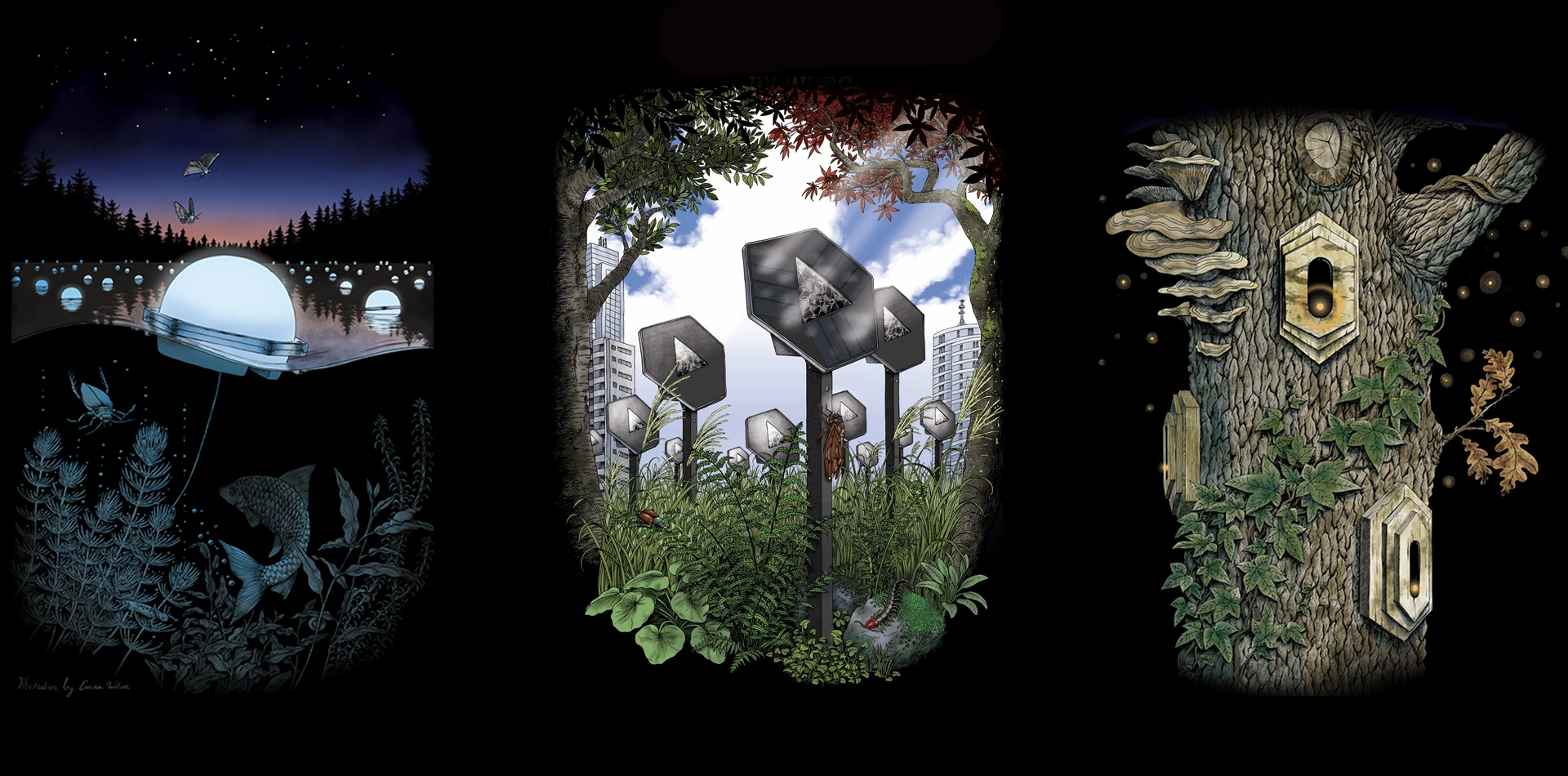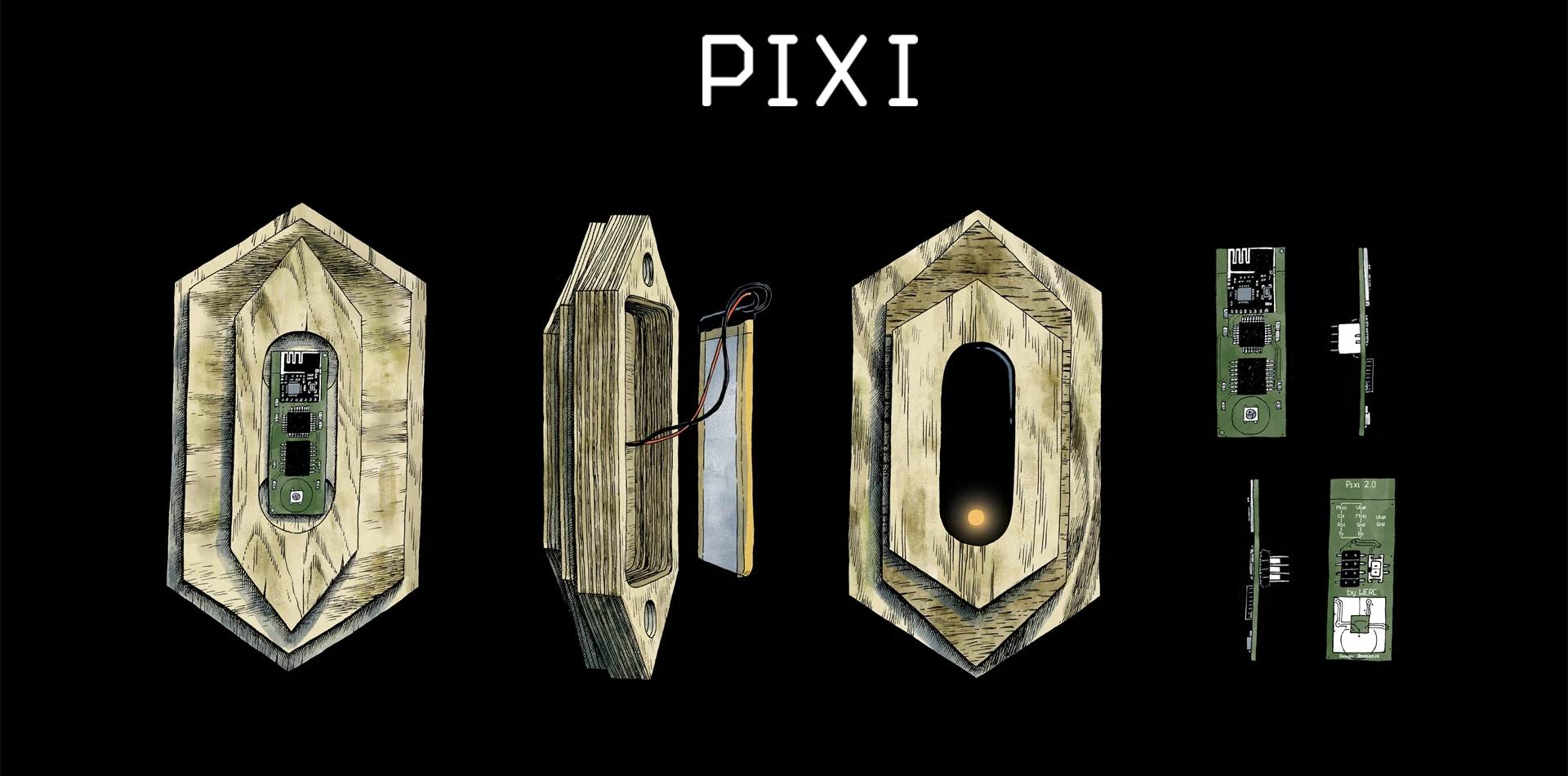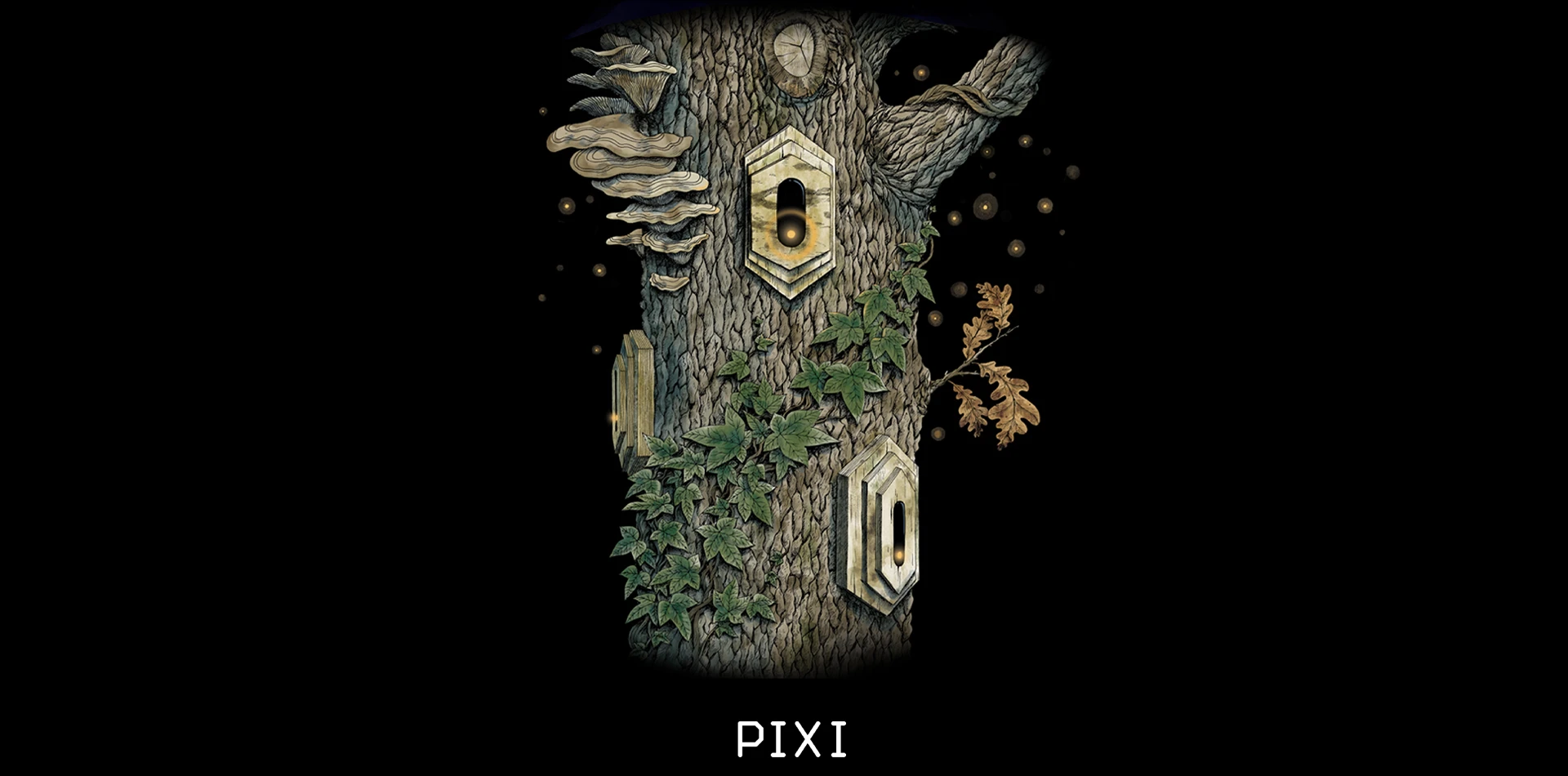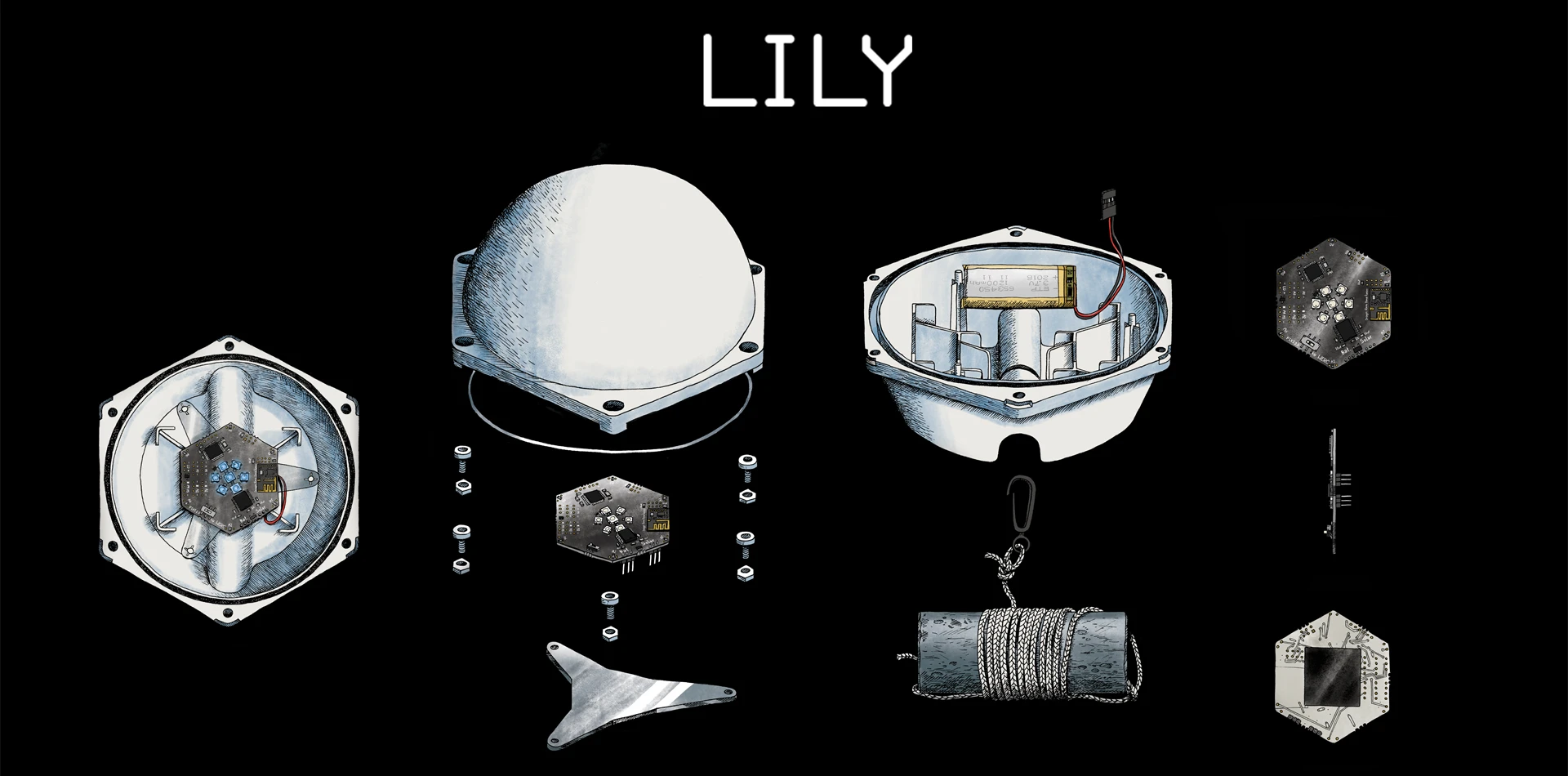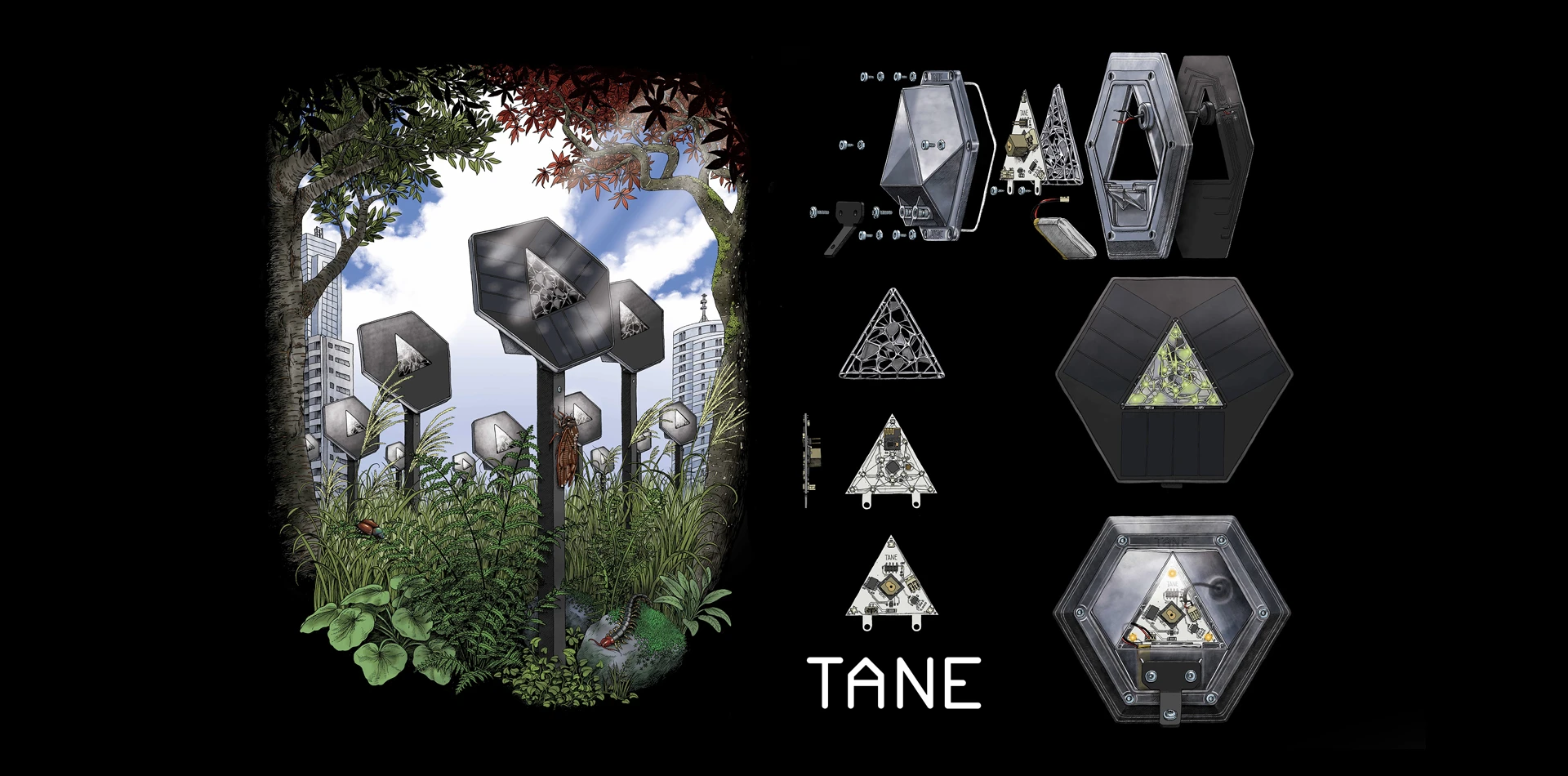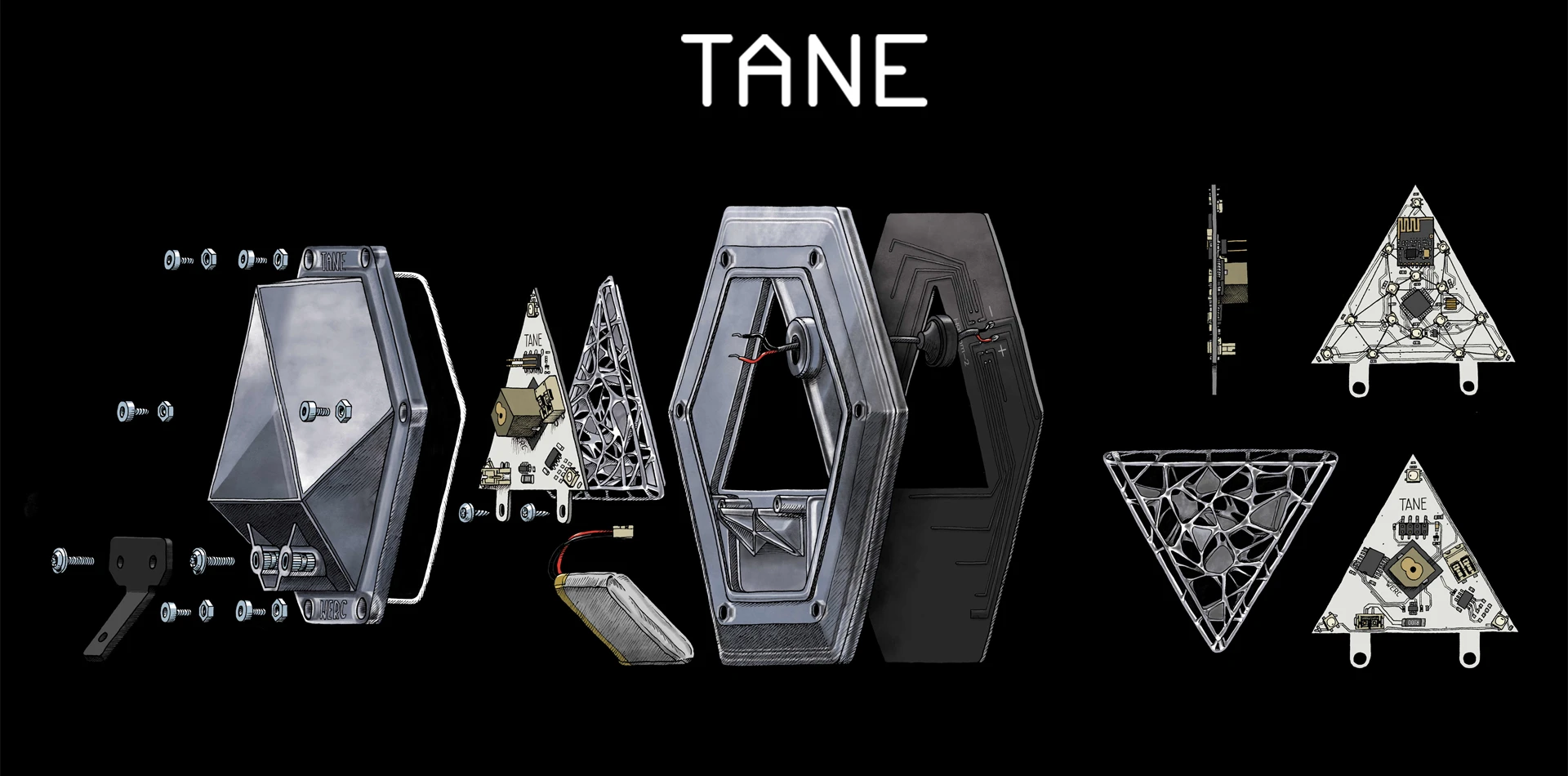With the Lumo family, WERC presents a series of art installations that connect natural processes, art and technology. WERC calls such an installation a ‘digital organism’ and has been inspired by the biological processes that take place within a group of organisms such as a flock of starlings, a group of fireflies or a school of fish. Within these groups of animals, individual animals react to each other at lightning speed, without central control. This is called swarm intelligence. There is an emergence: the whole is greater than the sum of the individual parts. The result is often of great beauty.
Just like in nature, the light or sound that a Lumo installation makes is created and designed by the swarm itself. The members of WERC program the set of rules with which the individual parts of the Lumo installation communicate. But the final conversation is conducted by the installation itself. All Lumo installations are therefore self-managing organisms.
The Lumo family currently has three members: Lily, Pixi and Tane. These family members each live in their own habitat. For example, Pixi lives in the forest and Lily on the water. Each Lumo is set up to observe the environment, listen to what the other Lumos are doing and react to it. They can make their own choices, which results in different behaviour within the different groups.
The Lumo family is self-organizing; the behaviour of each Lumo is just as important as any other Lumo, determining individually and collectively how the Lumos behave. This creates a spectacle of entities that work together and react to each other, thus mimicking animal behaviour.
Lily, Pixi and Tane are the results of ongoing research into the interaction between nature and technology. Each Lumo family member reacts to environmental factors such as temperature, movement and air pressure, making the behaviour of both the individual Lumo and the group different and changeable at all times.
Pixi is the first member of the Lumo family. WERC created a digital organism in which art, technology and nature come together. With this piece of light-art, WERC investigated whether a technical simulation of a natural phenomenon is capable of imitating the complex patterns of nature.
The Pixi originated from WERC’s fascination for the biological processes that take place within a group of organisms such as a flock of starlings, a group of fireflies and a school of fish. WERC studied the movements of these types of groups and the choices that an individual makes within such a group.
The Pixi is a digital organism with a pulsating light. It makes its own choices, but is also influenced by environmental factors. The Pixies are designed to be self-sustaining so that they can survive in a natural environment.
The piece of art, consisting of more than a thousand wirelessly communicating LED lights that respond to each other and to the visitor, was purchased by Staatsbosbeheer (Forestry Commision) to create more experience in the forest during the short, dark winter days. With Pixi, WERC presents an internationally acclaimed piece of light-art that gives visitors a unique and visually stunning experience through the forests of Drenthe.
With Lily, the second member of the Lumo family, WERC presents a light installation that instigates a dialogue between nature and technology.
Lily is a light installation with five hundred light balls that subtly change colour, floating on the water surface and communicating with each other. The installation is inspired by nature’s complex patterns. Each Lily is able to communicate with its environment using sensors. The behavior of each individual Lily is influenced by the movement of the water, the temperature and the size of the group.
The Lily’s make their own choices, creating unpredictable and complex light patterns and taking control of the work away from the makers. Visitors compared watching Lily to watching a starry sky: the longer you watch it, the more you see.
With the art installation Tane, WERC presents the third member of the Lumo family. Tane is a self-organising and complex art installation. Once installed Tane lives completely without further human interference in its environment and is able to survive its creators.
The interactive art installation Tane allows visitors to experience their environment in a new way. The installation consists of hundreds of individual Tane’s that stand on poles and can be recognized by their hexagonal black solar panels. The members of WERC see these Tane’s as small creatures.
The art installation Tane synchronizes with the rhythm of nature and is in direct contact with its environment. Tane makes noise during the day when it charges in the sun and glows at night when it wakes up. Due to the varying weather conditions Tane has to deal with, the installation shows different light patterns in the evening, which from time to time lead to stunning light spectacles.
